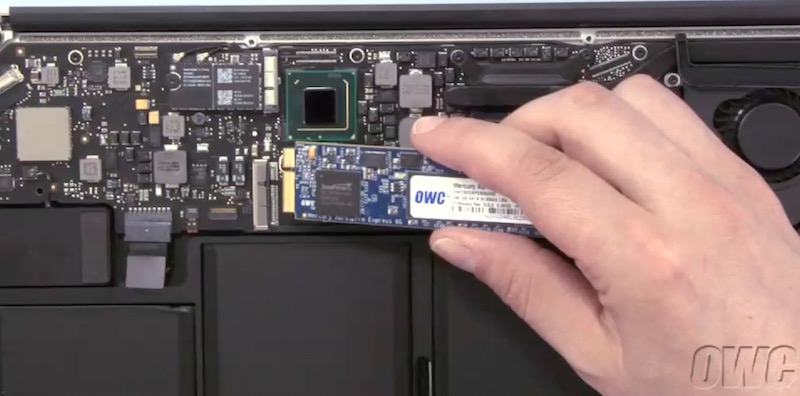
- #UPGRADES FOR MAC 2010 MODEL HOW TO#
- #UPGRADES FOR MAC 2010 MODEL INSTALL#
- #UPGRADES FOR MAC 2010 MODEL UPDATE#
- #UPGRADES FOR MAC 2010 MODEL UPGRADE#
- #UPGRADES FOR MAC 2010 MODEL SOFTWARE#
The 2014 Mac Mini is more interesting than that but unfortunately for people who have been waiting for this refresh, it's more notable for the stuff it's missing than its upgrades.
#UPGRADES FOR MAC 2010 MODEL UPDATE#
If that was all that was happening, the Mac Mini would be a welcome-if-overdue update to the desktop. Desktops and laptops haven't advanced a whole lot in the last year, so for the most part the Mini is just getting 2013's upgrades a year late.
#UPGRADES FOR MAC 2010 MODEL UPGRADE#
Apple went through all of its Macs last year, updating them with new Intel Haswell CPUs and 802.11ac Wi-Fi adapters and faster SSDs and (sometimes) Thunderbolt 2, while the Mini sat and waited for an upgrade that never came.Īpple quickly announced a new Mini at its media event in October, two years after the 2012 Mac Mini was introduced. It's easy to feel sorry for the Mac Mini. HDMI, 2x Thunderbolt 2, 4x USB 3.0, audio line-in minijack (digital/analog), audio line-out/headphone minijack (digital/analog), SDXC card slot Gigabit Ethernet, 802.11ac Wi-Fi, Bluetooth 4.0
#UPGRADES FOR MAC 2010 MODEL INSTALL#
As demonstrated by hackers years ago, the EFI flaw has been present in Windows PCs, allowing hackers to exploit it and install ransomware.Dual-core 2.6GHz Intel Core i5-4278U (Turbo Boost up to 3.1GHz)ĨGB 1600MHz LPDDR3 (soldered, upgradeable to 16GB at purchase)ġTB Fusion Drive (128GB PCIe SSD + 1TB 5400 RPM HDD) Duo Labs has said that it has chosen the Apple ecosystem as it offered the most consistent data when compared to Microsoft's Windows PCs running Intel chips.

As a result we recommend spending a couple of seconds to ensure your Mac is secure by checking if it is running the latest firmware version and, if not, upgrading as soon as you can.ĮFI vulnerability isn't just related to Apple. Unfortunately, the same goes for anti-malware apps such as MalwareBytes, due to the EFI's nature of operating beneath the operating system software. While CleanMyMac, MacKeeper, CCleaner, OnyX and the like are highly capable apps for keeping your Mac clean, they cannot alert users about the EFI firmware vulnerability. Therefore it’s important the user checks manually, since they won't be able to close the backdoor that hackers can access to eavesdrop or steal sensitive information, and neither can Mac optimization apps. The problem is that macOS won't alert users if an EFI update has failed to install on the hardware.

macOS won't let you install firmware that's not developed for the model you are trying to update.
#UPGRADES FOR MAC 2010 MODEL HOW TO#
It's important to identify your Mac model, because that's how to correctly determine which firmware you’re on and how to install the necessary update. Or update the operating system to at least macOS 10.12.6 Sierra, because this will include all the necessary security updates and the correct firmware. If the firmware version displayed in the hardware overview is older than that listed for your Mac, then download the firmware and apply the update. Apple has stopped updating that page since September 2017. You can compare that to the firmware update number Apple lists in a support document dedicated to EFI and SMC updates for Intel-based Mac computers. In the hardware overview section macOS displays the Model Identifier, the Boot ROM version and the SMC version number your Mac is running. You can check what EFI version your system is running by clicking on the Apple menu and selecting About This Mac > System Report > Hardware. How You Can Check the EFI Firmware Version

However, if you are running one of the 16 Mac models identified by Duo Labs, there is a chance that your system hasn’t received any EFI update at all: iMac 7,1 to 10,1, MacBook 5,1 and 5,2, MacBook Air 2,1 and more.
#UPGRADES FOR MAC 2010 MODEL SOFTWARE#
That leaves a security hole in the system, because although users might have the latest OS version installed, if the EFI firmware is an older version, it lacks the latest fixes of known firmware issues.Īpple released EFI updates separately, but since 2015 the EFI update is bundled in the software update Apple has been pushing out to users. What Does That Mean to Mac Users?Īfter analyzing 73,000 Macs currently in use, Duo Labs has discovered a discrepancy between the firmware versions they expected the machines to be running and the actual EFI version installed. The catch is that the flaw isn't new and seems to require physical access to the Mac in order to work. The vulnerability allowed the CIA, for example, to spy on targeted Mac users, as a so-called Vault 7 cache of secret CIA documents released by WikiLeaks show.


 0 kommentar(er)
0 kommentar(er)
